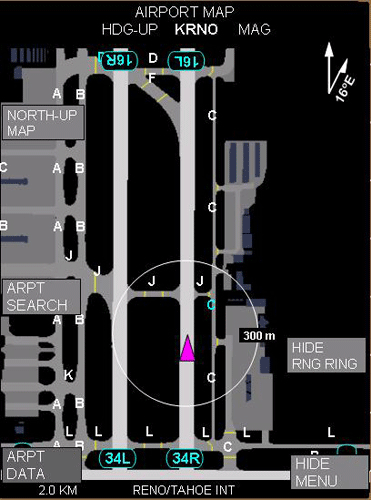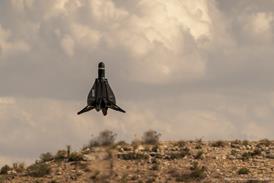The US Federal Aviation Administration hopes to have electronic flight bags with moving map airport displays or aural ground alerting systems in at least 400 commercial airline cockpits by next year under a three-year, 50/50 cost-share programme designed to better understand how the technologies affect runway safety.
The programme, announced by FAA acting administrator Bobby Sturgell on 14 July, is part of a broader FAA effort to reduce runway incursions at US airports.
Along with up to $5 million a year for cockpit aids, Sturgell announced that 20 additional runway status lights systems would be deployed at major airports at a cost of $400 million, complementing the two test systems in place at Dallas-Fort Worth and San Diego airports.
The FAA has also expanded a programme to deploy low-cost airport surveillance systems at smaller airports, promising to install the systems at six sites in 2009.
There have been 19 serious incursions at US airports so far this year, an amount that is similar to the tally for the first half of last year, when the FAA recorded an "all-time low" of 24 serious incursions, says Sturgell.
Paul Erway, the FAA runway safety programme office manager heading the cockpit aids project, says an internal study by the FAA revealed that having a moving map display with "own-ship" position on an electronic airport diagram may eliminate 43-44% of incursions caused by pilots.

Historically, more than half of incursions are caused by pilots. About 30% are the fault of controllers and 20% are due to airport vehicles and pedestrians.
The study looked at all pilot-related incursions from 2004 to the present at 28 airports, using narrative reports filed to the FAA, follow-up interviews, and in some situations, review of air traffic control tapes.
"We tried to discern if the pilot's situational awareness was the issue," says Erway, "and would the EFB or an audible alert system have made a difference."
Erway says the agency is on track to sign with partners, preferably airlines or large corporate flight departments, by the end of August.
Participants installing the equipment will be reimbursed 50% of the cost of either the audible or Class II (free-standing) EFB-based moving map systems, estimated to cost no more than $30,000 per unit.
Operators will get half of the money upon signing the agreement with the FAA another 25% after the equipment is installed, and the final 25% instalment after providing six months of operational data to the FAA, says Erway, who adds that at least 400 aircraft must be equipped to get statistically significant data set.
Once installed, the plan is to get pilots to fill out a questionnaire (on the EFB itself for moving map installations) after every flight querying how the aids helped, with answers downloaded to the company's operation centre, collated and passed along to the FAA.
Erway says $2 million is available for the programme this year, but the FAA hopes to issue another round of awards in 2009 with a cap of $5 million.
Source: Flight International























